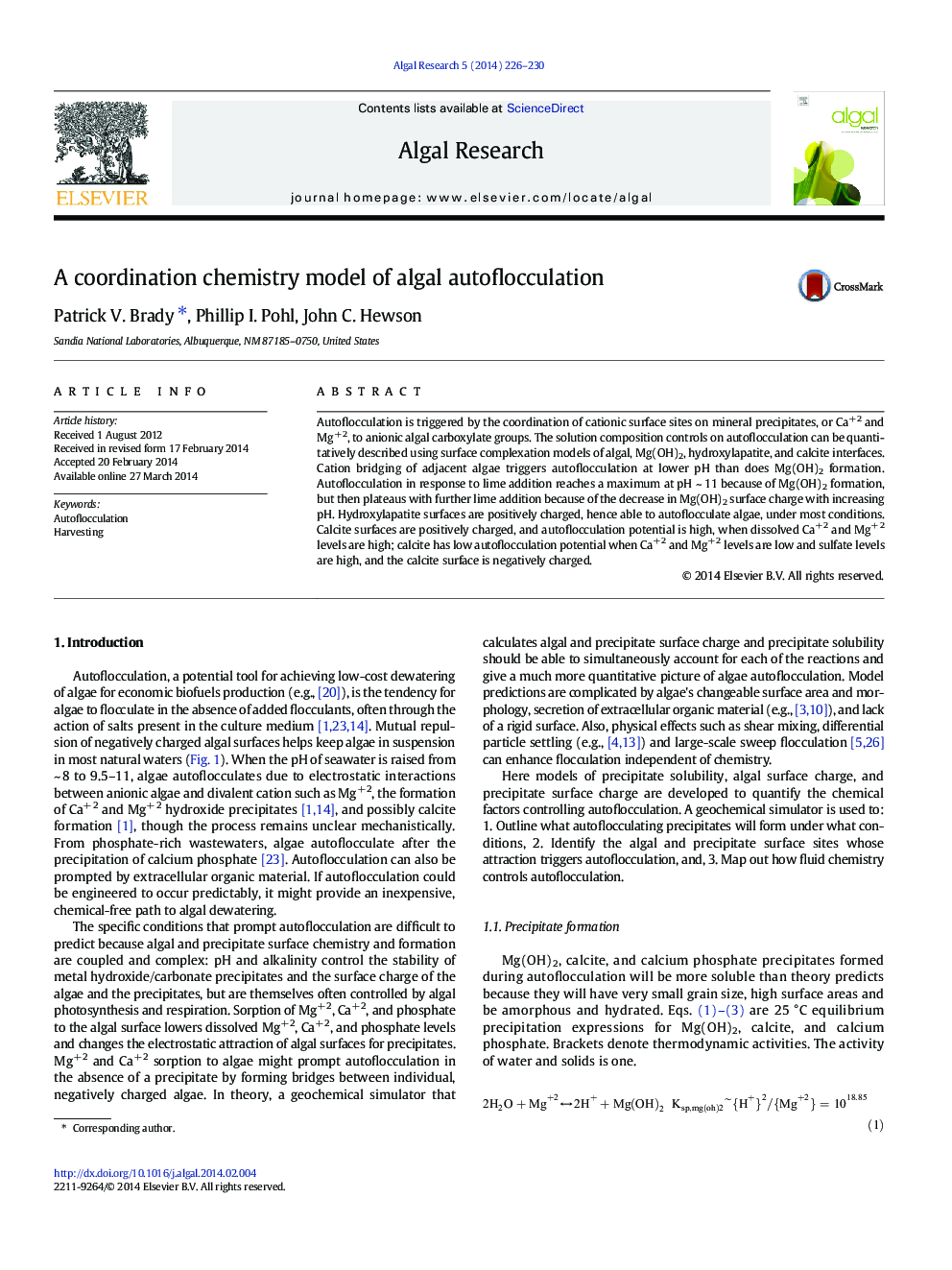| Article ID | Journal | Published Year | Pages | File Type |
|---|---|---|---|---|
| 1742099 | Algal Research | 2014 | 5 Pages |
Autoflocculation is triggered by the coordination of cationic surface sites on mineral precipitates, or Ca+ 2 and Mg+ 2, to anionic algal carboxylate groups. The solution composition controls on autoflocculation can be quantitatively described using surface complexation models of algal, Mg(OH)2, hydroxylapatite, and calcite interfaces. Cation bridging of adjacent algae triggers autoflocculation at lower pH than does Mg(OH)2 formation. Autoflocculation in response to lime addition reaches a maximum at pH ~ 11 because of Mg(OH)2 formation, but then plateaus with further lime addition because of the decrease in Mg(OH)2 surface charge with increasing pH. Hydroxylapatite surfaces are positively charged, hence able to autoflocculate algae, under most conditions. Calcite surfaces are positively charged, and autoflocculation potential is high, when dissolved Ca+ 2 and Mg+ 2 levels are high; calcite has low autoflocculation potential when Ca+ 2 and Mg+ 2 levels are low and sulfate levels are high, and the calcite surface is negatively charged.
